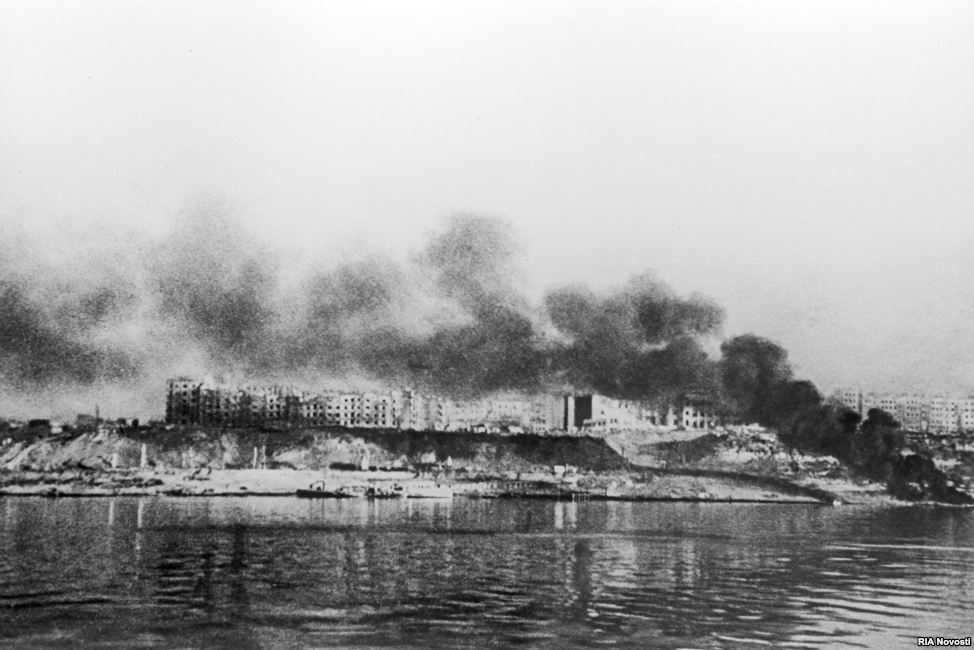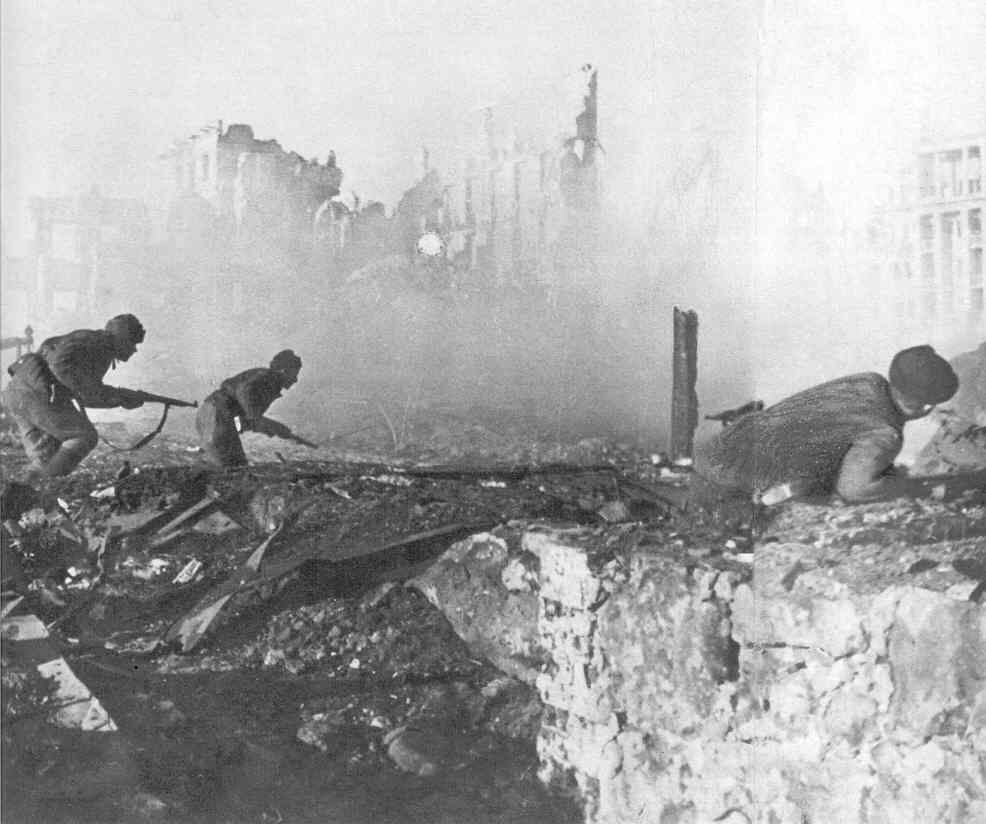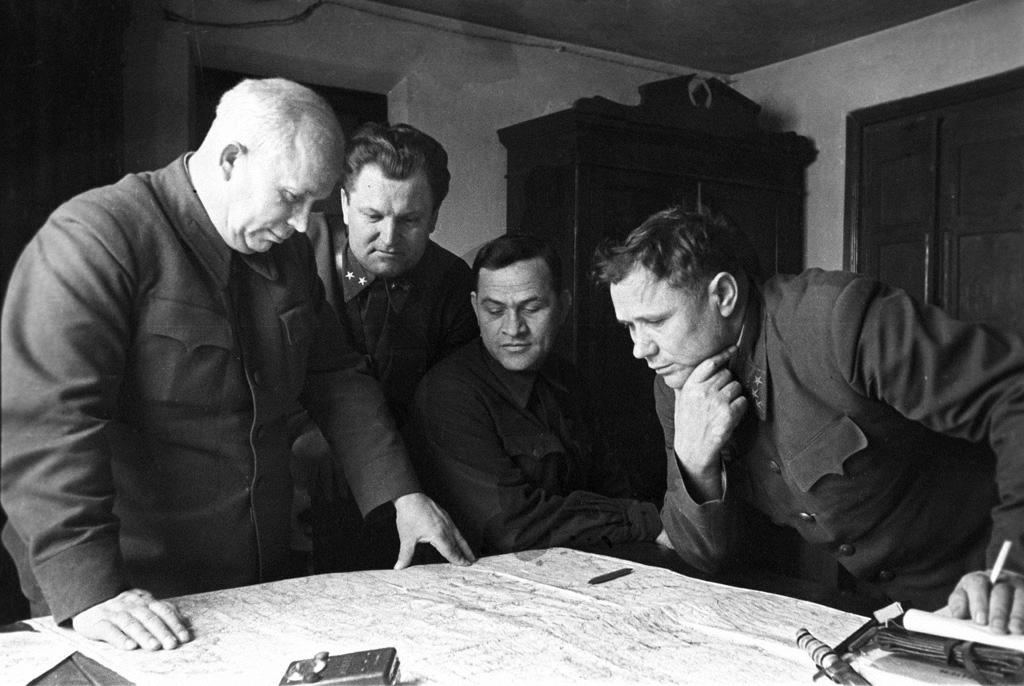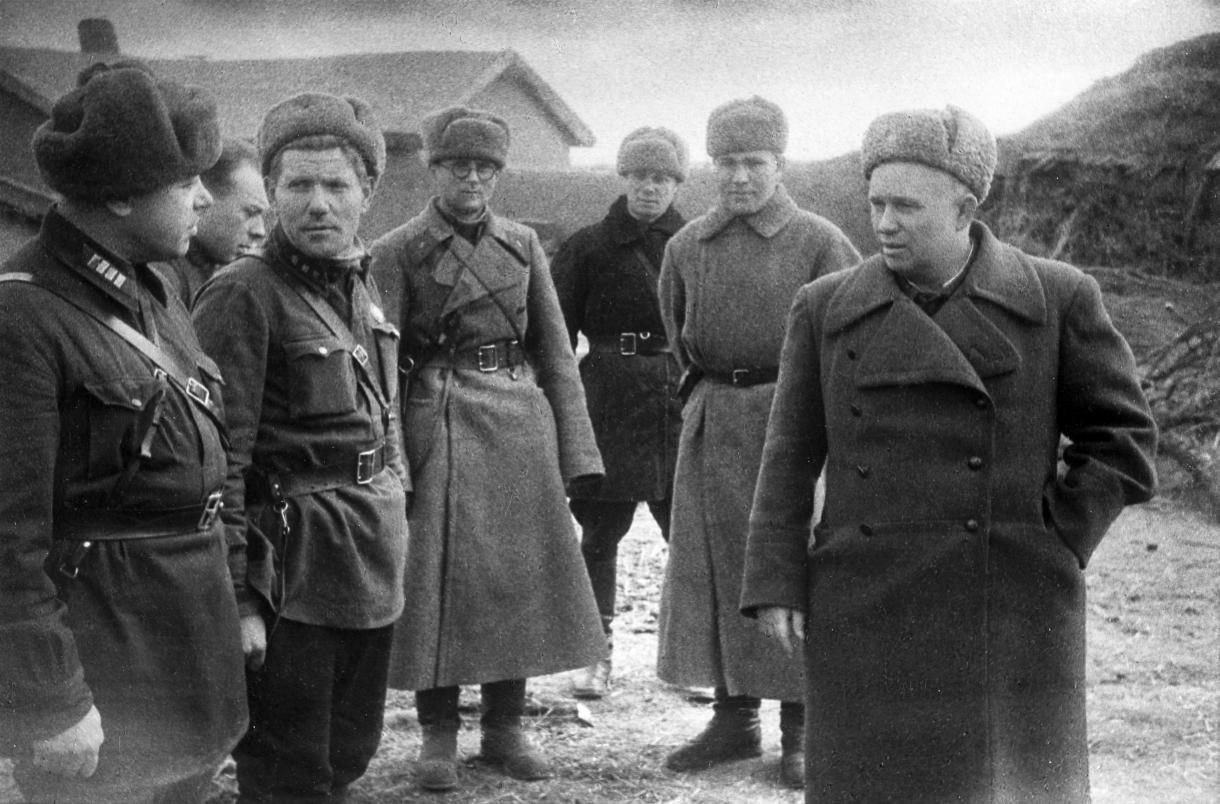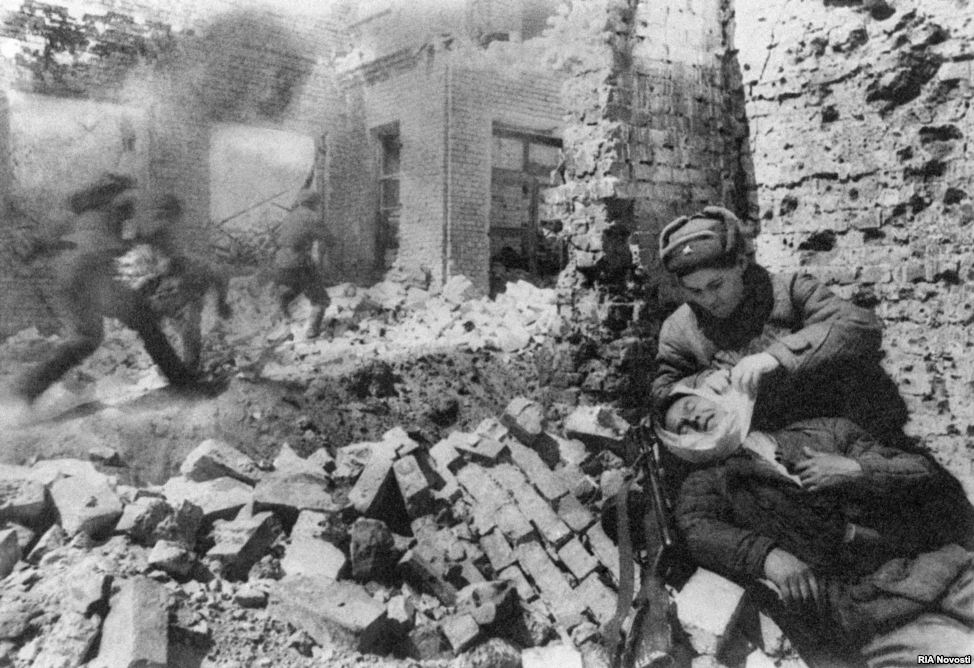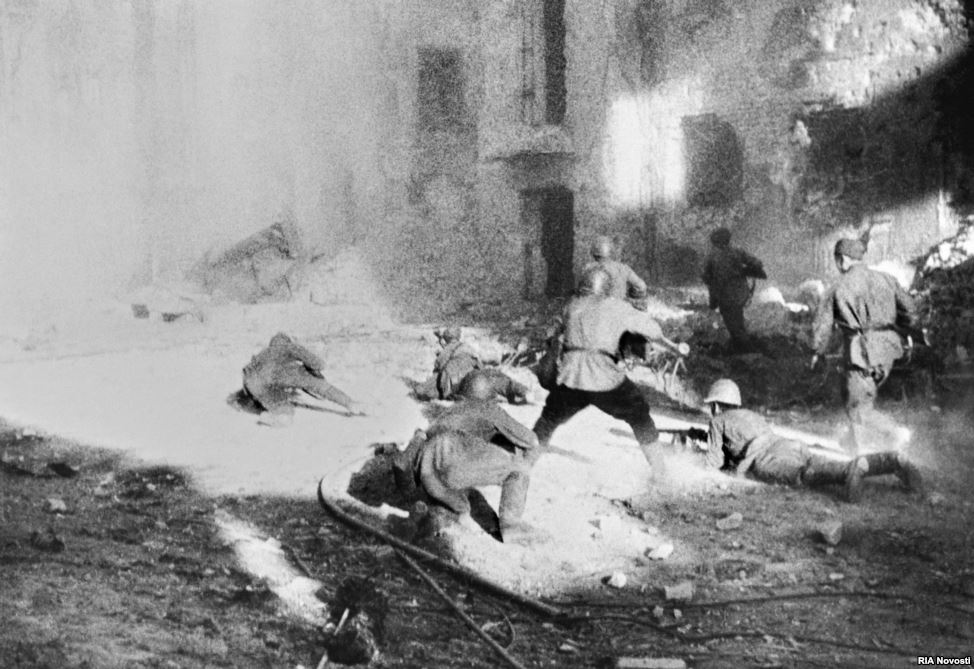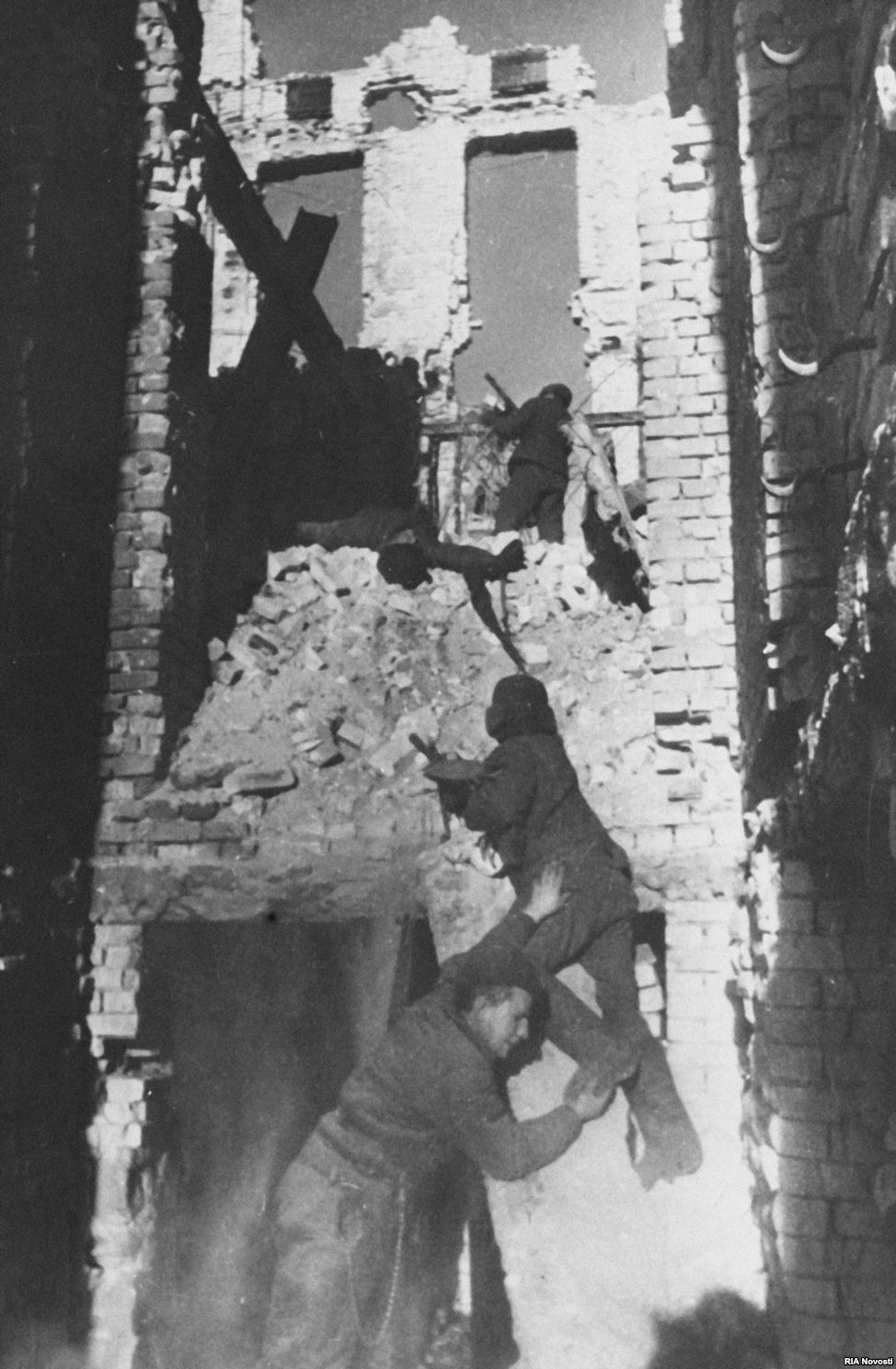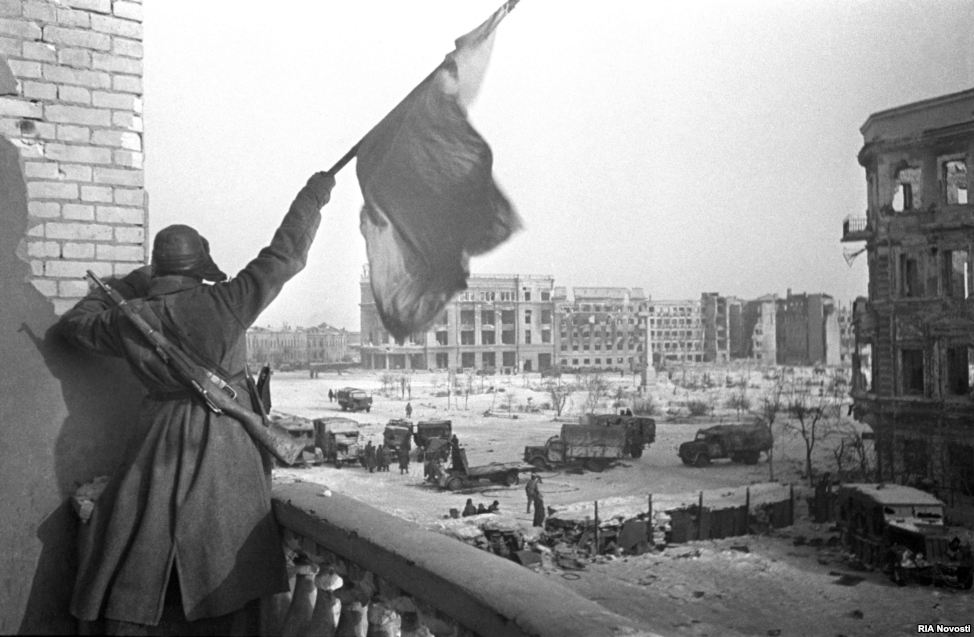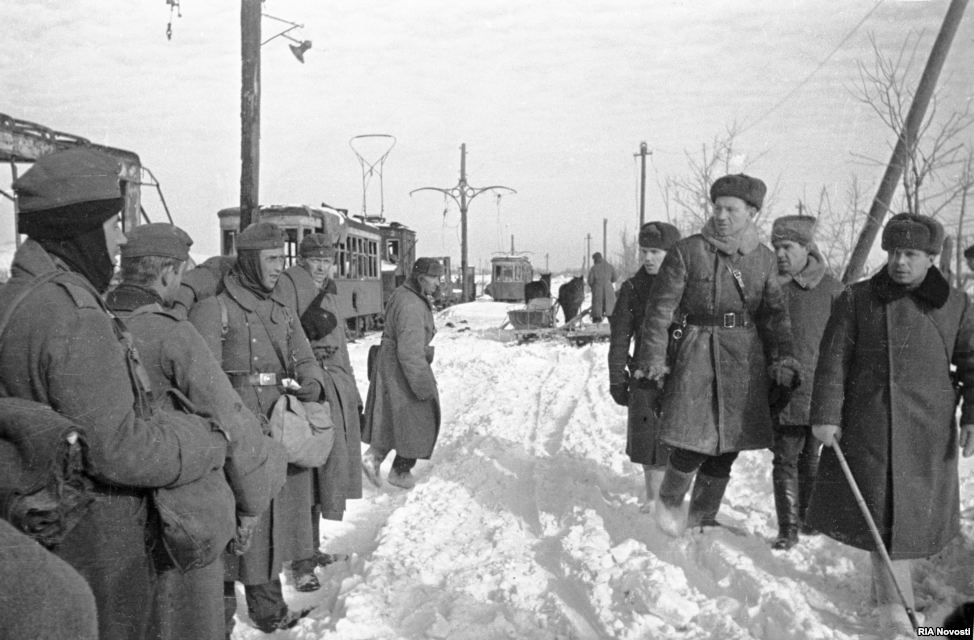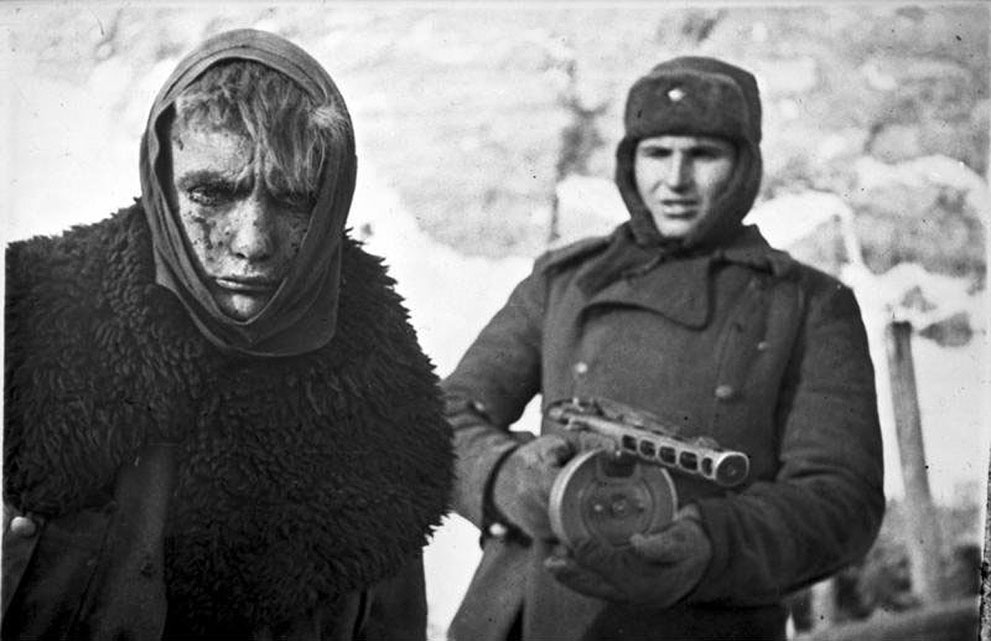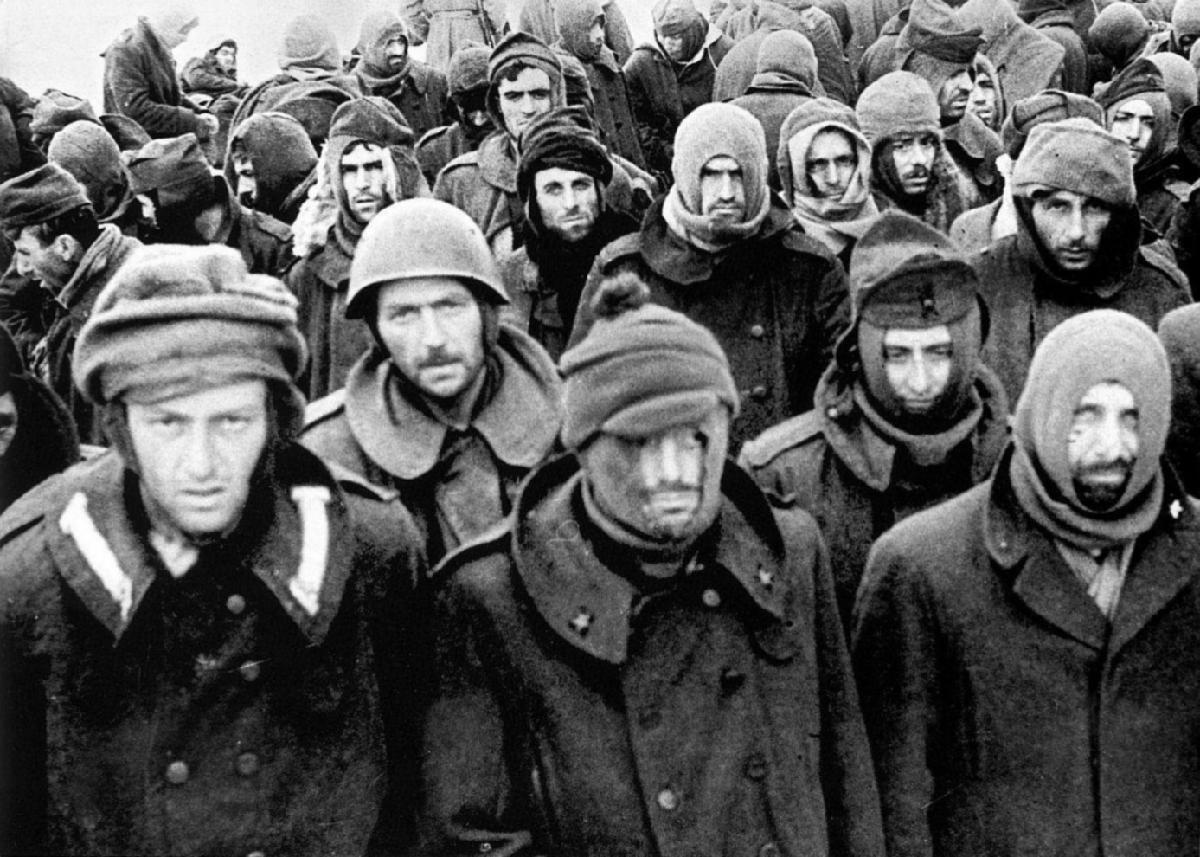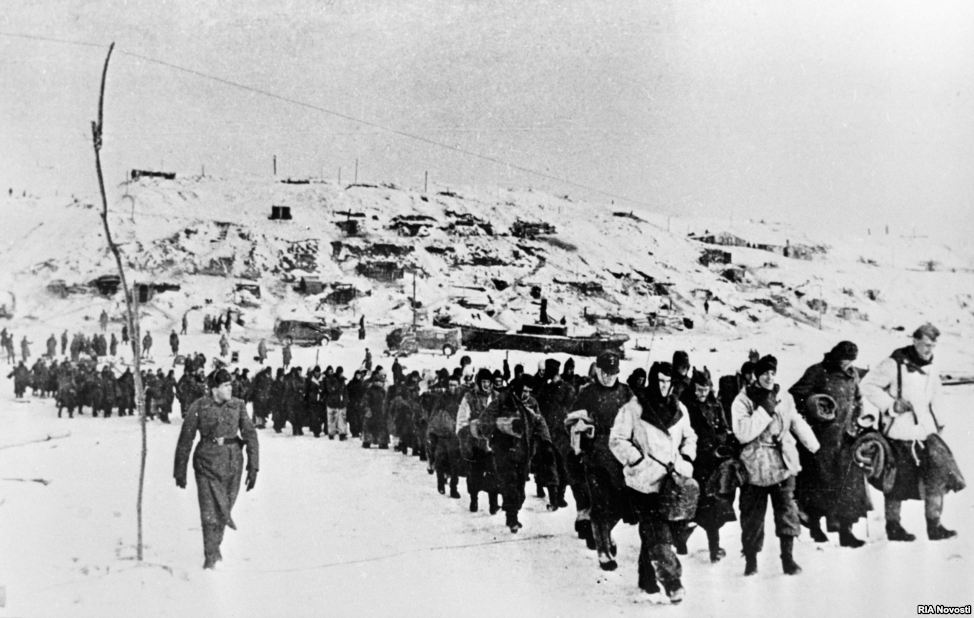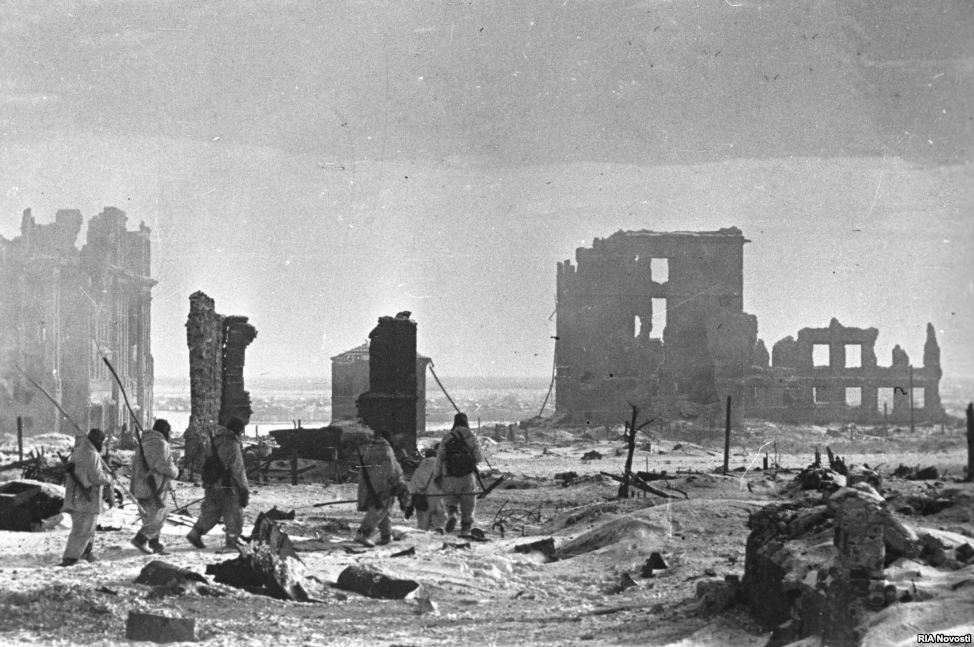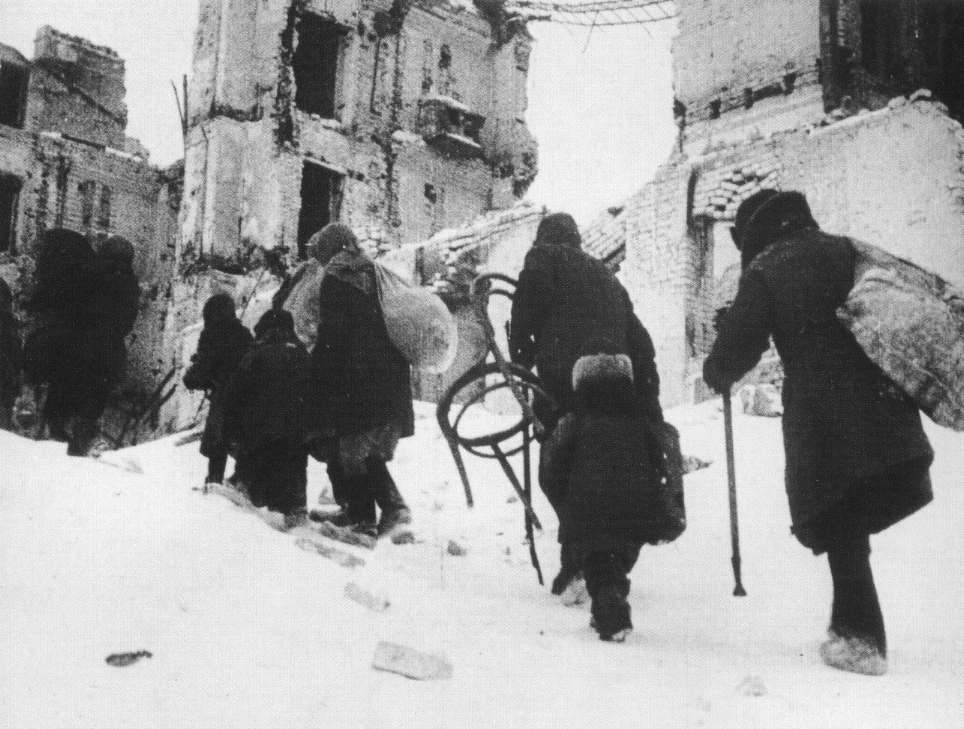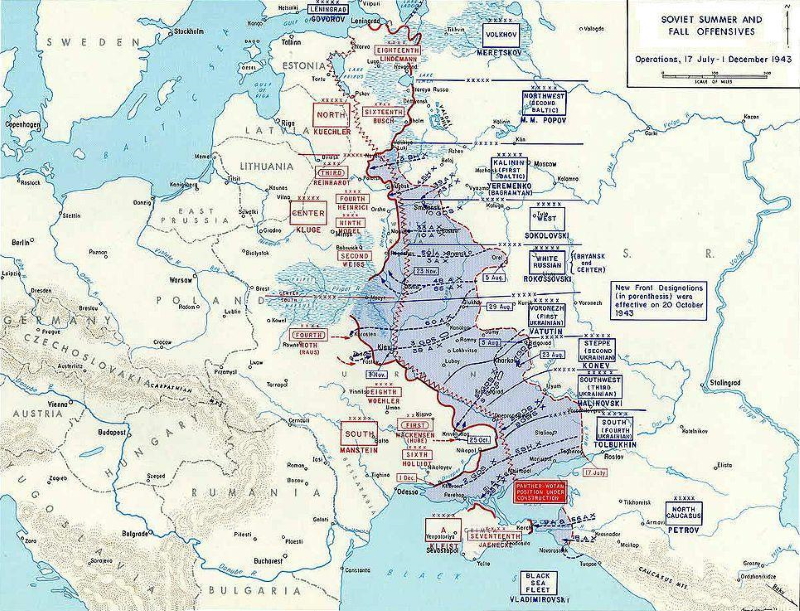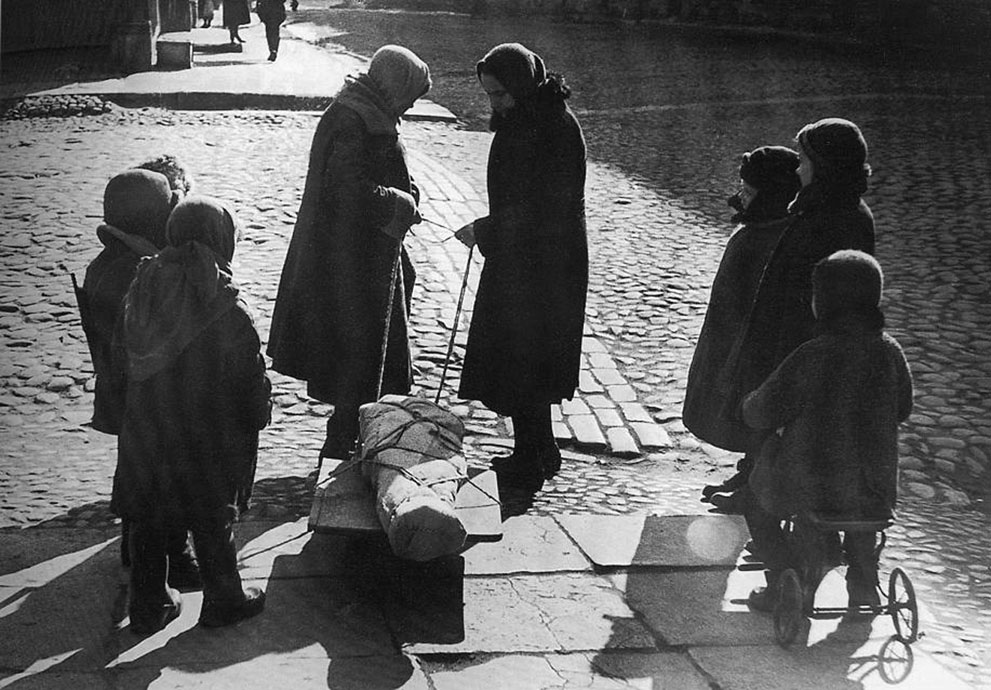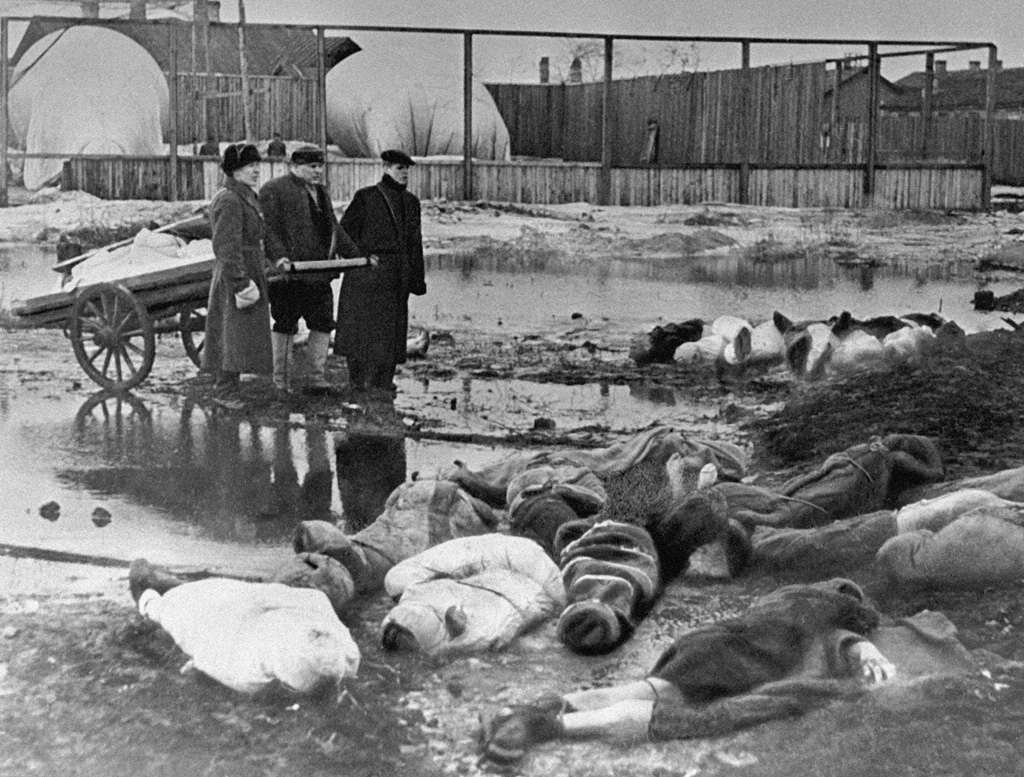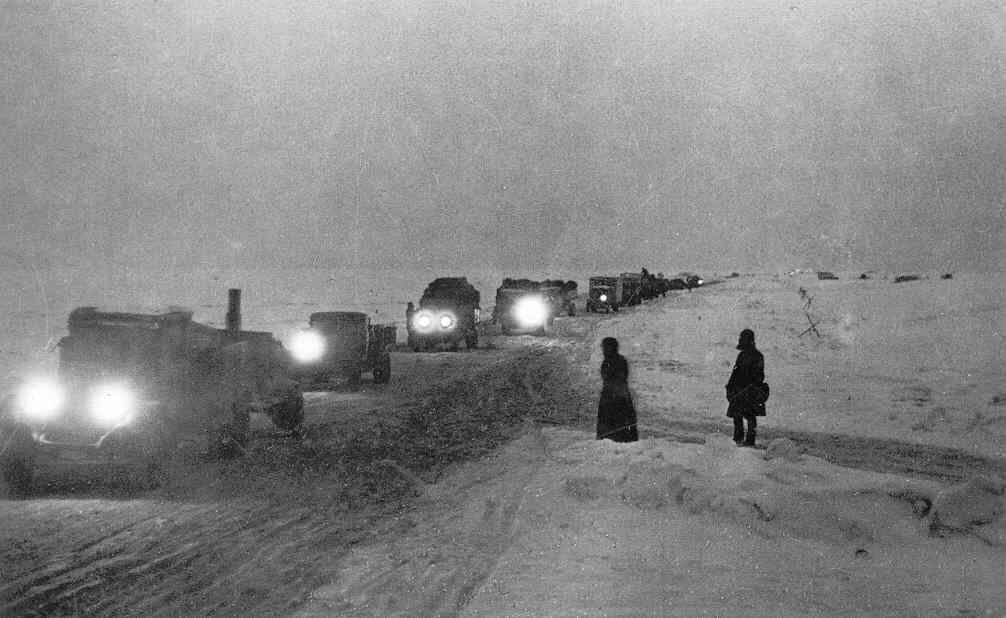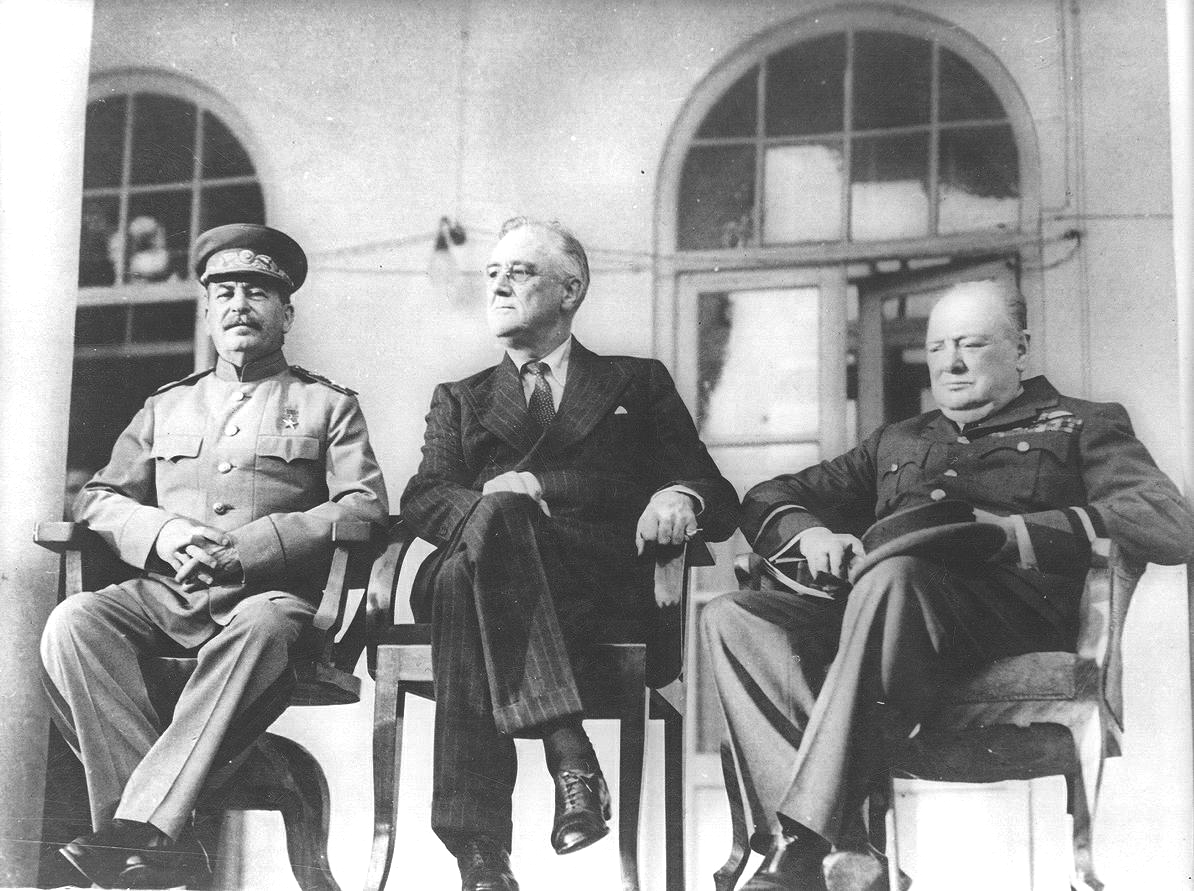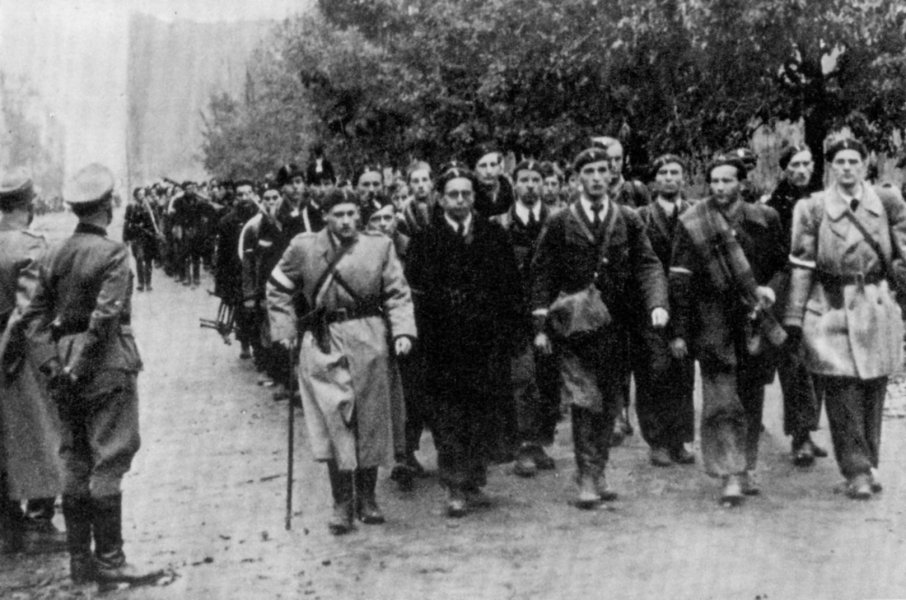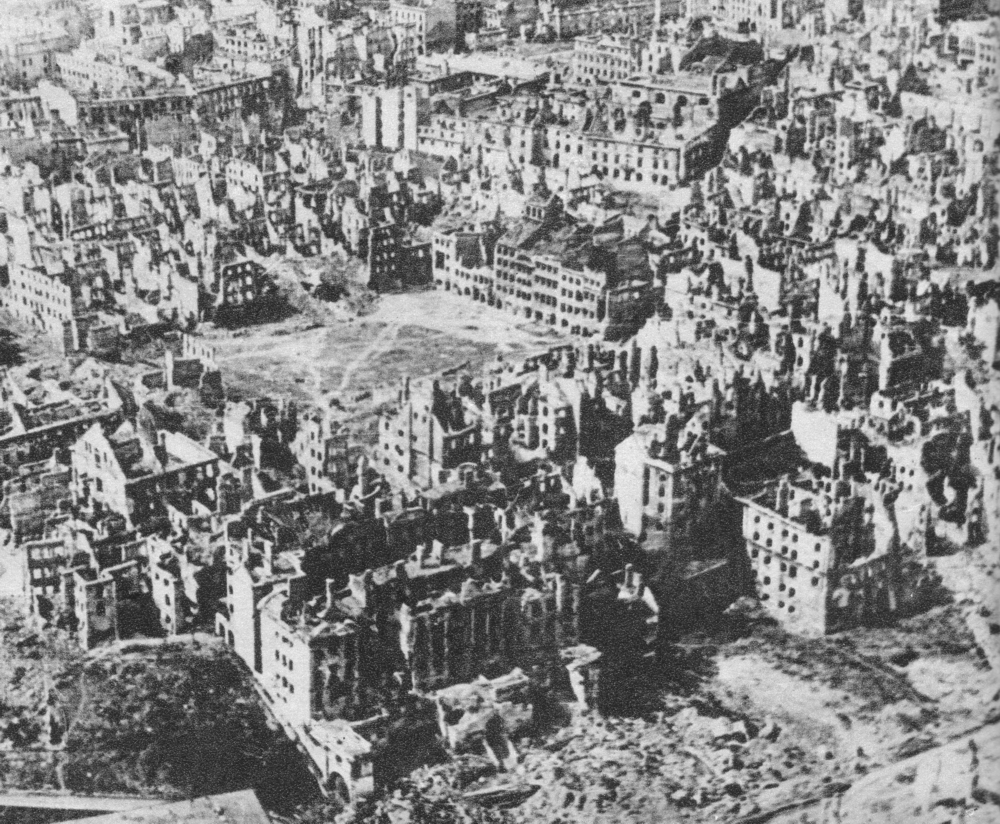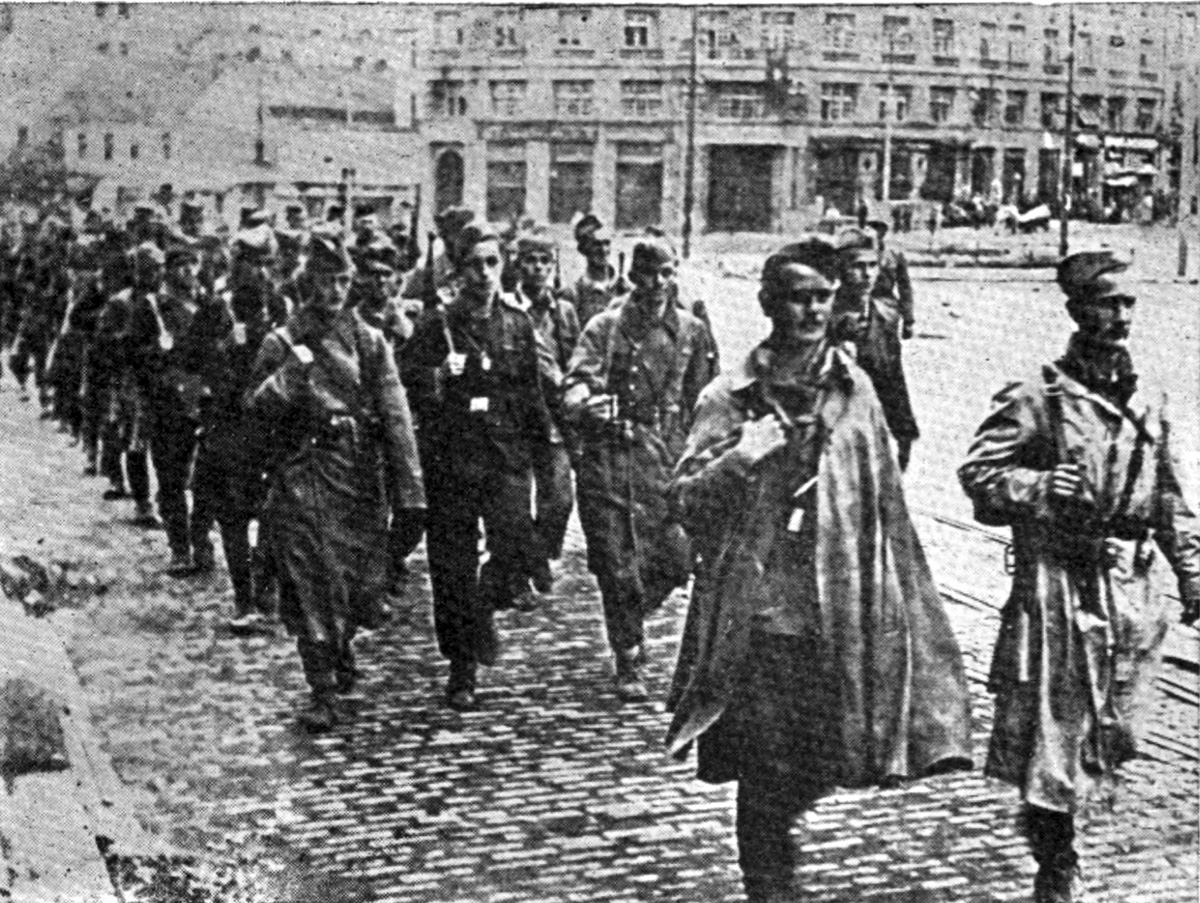16. WORLD WAR – ROUND TWO


THE EASTERN FRONT
 1942: Hitler reaches all the way to
1942: Hitler reaches all the way toStalingrad – and stalls there
 A German retreat in the face of a strong
A German retreat in the face of a strong
Soviet counteroffensive
 The seige of Leningrad (St. Petersburg)
The seige of Leningrad (St. Petersburg)
September 1941 – January 1944
 The Soviet Partisans working behind
The Soviet Partisans working behind
German lines
 The Tehran Conference (November 28 –
The Tehran Conference (November 28 –
December 1, 1943)
 The Soviet advance on the Eastern Front
The Soviet advance on the Eastern Front
(1944)
The textual material on page below is drawn directly from my work
A Moral History of Western Society © 2024, Volume Two, pages 180-183.
1942:
IN RUSSIA, HITLER REACHES ALL THE WAY TO THE VOLGA RIVER AT STALINGRAD – AND STALLS THERE |
|
Hitler focusses not on the capture of Moscow, but on the seizing of the grainlands of the Ukraine and Southern Russia and the oil fields at the Caspian Sea. His troops advance all the way up to the outskirts of Stalingrad at the Volga River. But the Russians make an all-out effort to hold the city. This will be as far as the Germans will advance against Russia ... before they begin to slowly fall back. |
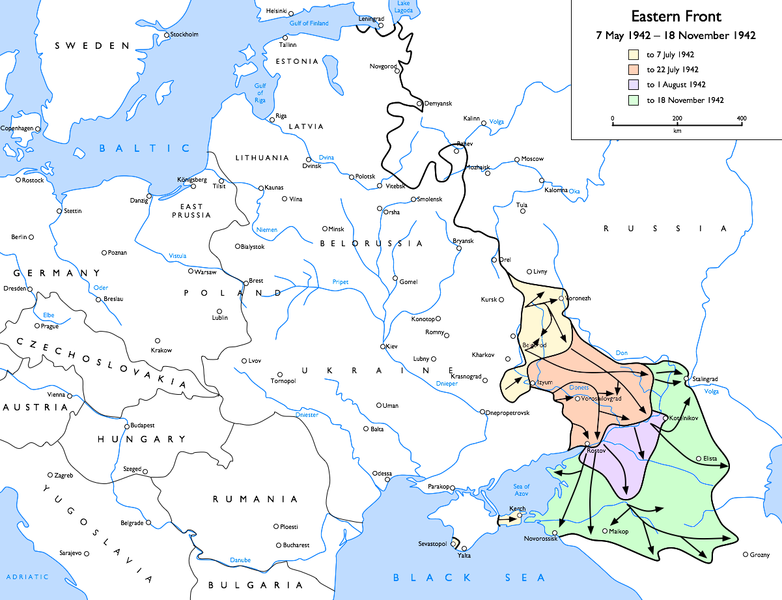
|
Hitler's army pushed deeper into Russia (1942). In June of 1942
Hitler was ready to resume his offensive in Russia – but rather than making a
final (and relatively short push) into either Moscow or Leningrad in the center
and north, he focused his efforts on expanding the German position in the
south. He wanted to reach the grain fields of the Kuban along the eastern
coast of the Black Sea and the oil fields of the Caucasus further east along
the Caspian Sea coast.
At first his armies (which included also huge numbers of Romanians as well as Italians and Hungarians) were very successful in destroying everything the Russians could throw against them. At Sevastopol the Germans left the city in utter ruins. At Voronezh on the Don River however the Germans encountered such stiff resistance that they were forced to turn their drive southward. They were able then to take Voroshilovgrad and Rostov before the end of July. At this point they divided their army, Army Group A continuing south under General Kleist toward the old fields of Baku (which however they failed to reach before winter set in) and the Army Group B under General Paulus heading east toward the city of Stalingrad (today’s Volgograd) located strategically on the Volga River. The critical nature of Stalingrad. For both Stalin and Hitler this battle took on huge strategic significance. Stalin knew that if Russia could not stop the Germans there ... and allowed them to cross the Volga River (which ran at the back of the Russian position along the Eastern side of the city), Russia would likely be lost completely ... for once the Germans were across the river there would be no other place with such a strong defensive position where the Russians could dig in to stop a German offensive. A Russian comeback would thus be almost impossible. Consequently, the Russians were determined to take even a suicidal stand at Stalingrad. On the other hand, Hitler knew that if he did not take Stalingrad from the Russians, his entire objective of seizing the oil-rich and fertile fields of southern Russia would be threatened. Thus each side poured millions of men into the battle against the other. At first it looked as if things would soon favor the Germans ... who in October pushed the fighting even into the city of Stalingrad itself. The German 6th Army finds itself trapped inside Stalingrad. But then in November another Russian winter set in with full force ... and the Germans found themselves in trouble. In their long reach across the Ukraine and southern Russia up to the city of Stalingrad the Germans were reinforced only by a greatly exposed and poorly defended line of supply behind them. And their troops were exhausted. This weakness in the German position thus offered the Russians a grand opportunity to swing north and south around the Germans, close off that line of supply – and encircle the entire German 6th Army. Consequently, on November 19 the Russians launched a counteroffensive around both the northern and southern flanks of the over-extended Germans. Within a mere few days (by the 23rd) the Russians had completely encircled the entire 14 divisions of Paulus’ 6th German Army. Worse … Hitler, blinded with pride, refused to allow his army to retreat from Stalingrad but ordered them instead to wait for reinforcements – which never came because the Russians were able to hold them off. On December 12th German units located further to the West attempted a breakthrough to the trapped army, but failed. Still the insanely proud Hitler would not let his army pull back from this encirclement ... even though it was immediately apparent that the German situation was hopeless as long as the Germans remained where they were. By the beginning of February (1943) the German 6th Army was frozen (it was another terrible winter), hungry, sick and dying. Thus (much to Hitler’s great fury) the German 6th Army (or what was left of it) finally surrendered. Consequently, all the German expansion achieved since the previous summer was lost. The battle for Stalingrad was not a heroic event – but a hugely murderous struggle. Of the original nearly a million German, Romanian, Italian and Hungarians soldiers, only 90,000 were still alive to be able to surrender (only about 5,000 of those would ever make it back to Germany ten years later, the vast majority dying within a few months of their capture) and another 10,000 chose to fight on until there were only small groups of starving soldiers left when the fighting drew to a close. But the Russians had also lost big, with nearly a half a million soldiers killed and 650,000 wounded or sick – and countless numbers of Russian civilians also killed. But the Russians could absorb those losses. Germany could not. |
|
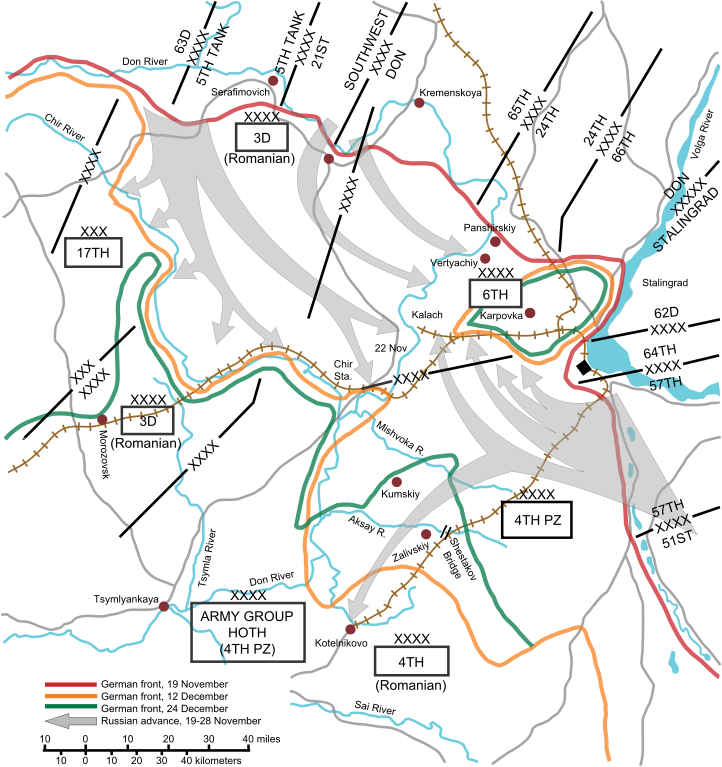
|
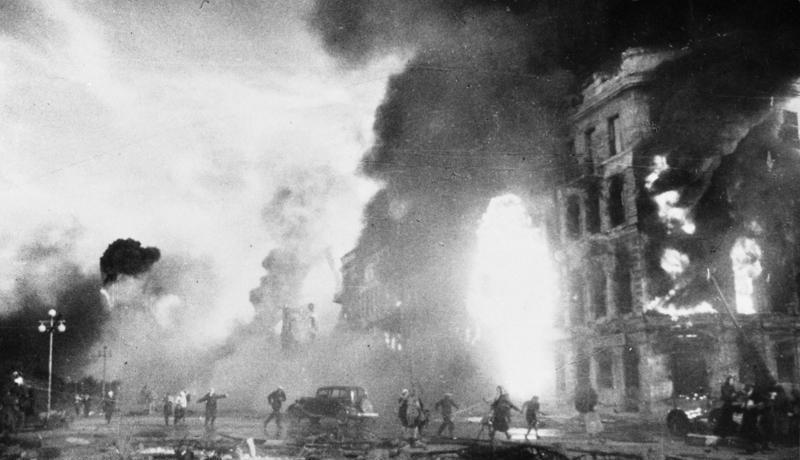
Deutsches Bundesarchiv
RIA Novosti Archive
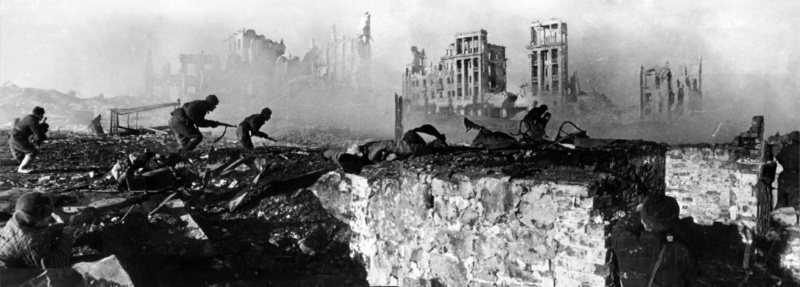
Sovfoto/Eastfoto

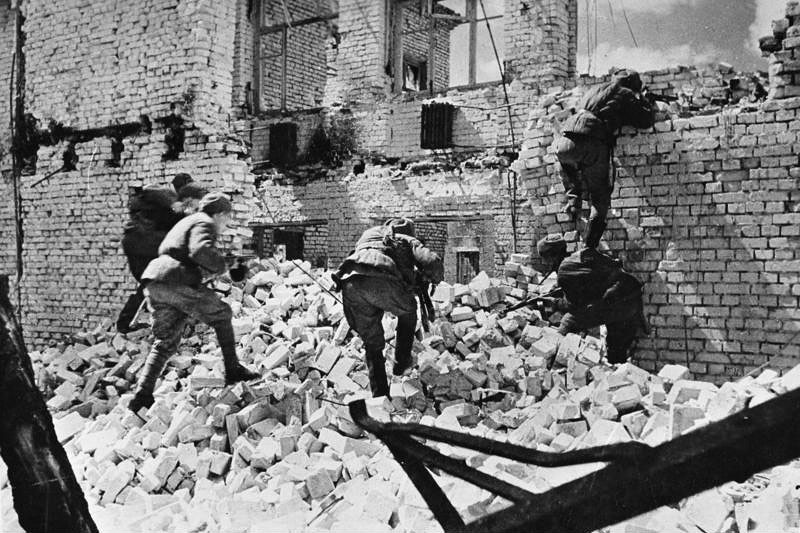
RIA Novosti Archive
RIA Novosti Archive
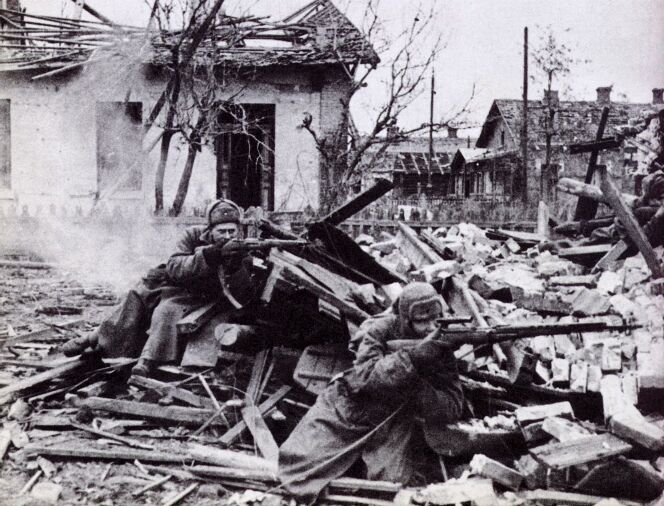
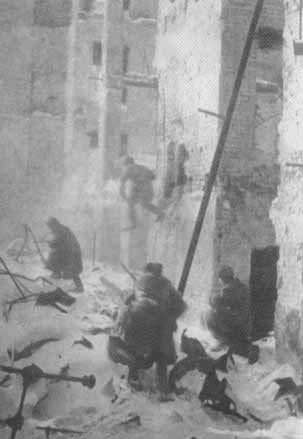
RIA Novosti Archive
RIA Novosti Archive
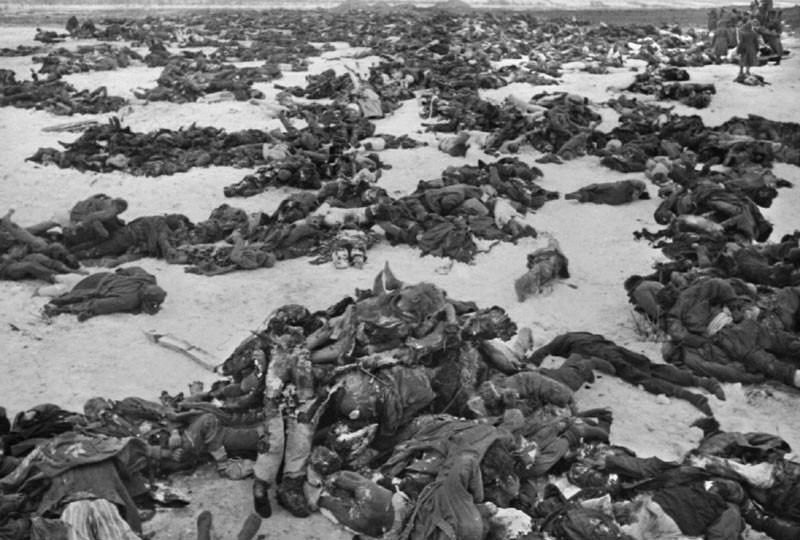
Masses of dead soldiers at Stalingrad
RIA Novosti Archive
Deutsches Bundesarchiv
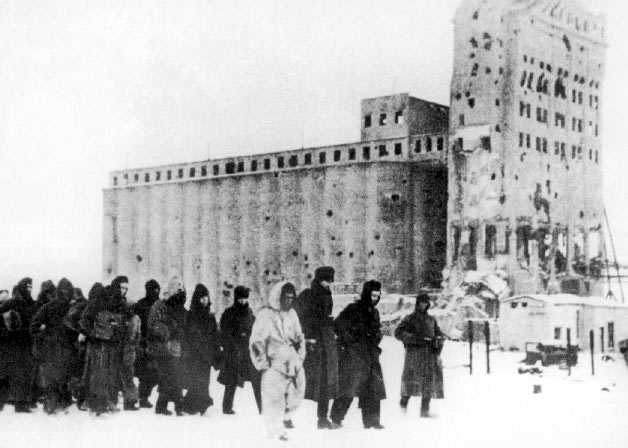
Russian public domain
RIA Novosti Archive
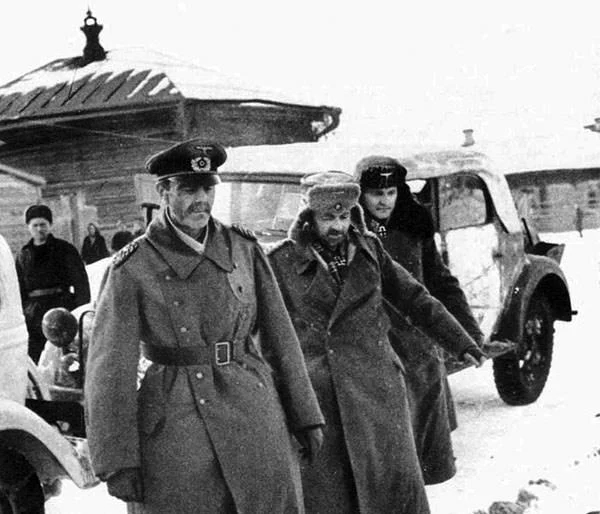
RIA Novosti Archive
Russian Newsreel
NOW
BEGINS A SLOW GERMAN RETREAT IN THE FACE OF A STRONG SOVIET COUNTEROFFENSIVE |
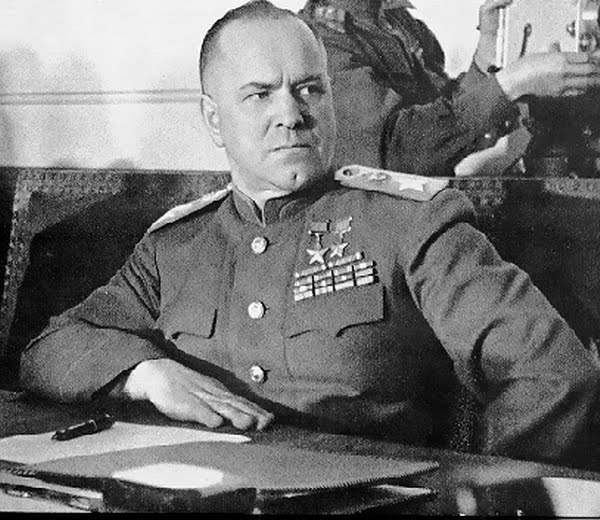
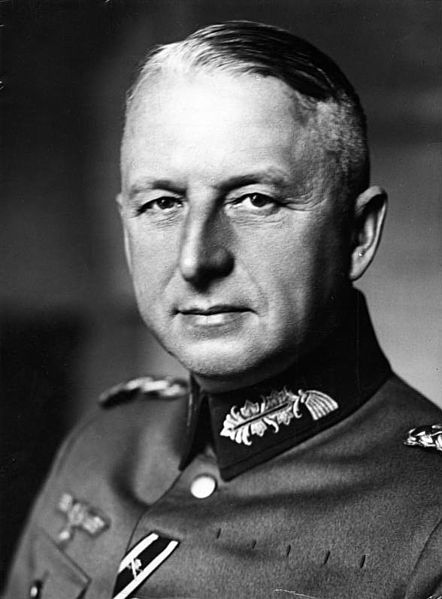
Bundesarchiv
|
Germany was now in deep trouble. By the summer of 1943 the Germans were ready to try again – this time at the center of the Russian lines, aimed at Moscow. But the Russians did not give way and the Germans succeeded only in exhausting themselves. By mid-July it was the turn of the Russians to go to the offensive, both in the area west of Moscow and in the south where the Germans had been on a retreat since Stalingrad.
At Kursk the Germans attempt a counterattack against the advancing Soviets in July of 1943 ("Operation Citadel"). This turned into the largest tank battle ever between the two sides, with each side deploying over 3,000 tanks each. But the Soviets put up a stiff resistance, and despite the huge losses in Soviet tanks and men, they were able to stop the Germans (the Germans themselves had also been losing a large number of tanks and men). And then Hitler strangely called off further action … switching his focus to the Allied assault on the Island of Sicily (a decision that has been greatly criticized by military historians). The Russian victory at Kursk now set the Germans reeling.
But this pullback at Kursk was viewed by the Russians as a great victory and by the Germans as a strange loss, thus having a strong moralizing/demoralizing effect on both armies. The Germans then retreated to the long Dnieper River in September to try to achieve there what the Russians had achieved at Stalingrad. There some nearly four million troops on both sides went at each other along an 800-mile front from Smolensk in the north all the way south to the Black Sea ... following the lines of this great river. For the next four months battles raged all along this line as the Soviets attempted to cross and seize the Western banks of the Dnieper. The Ukrainian capital of Kiev was a particularly important focus of this battle. Several massive attempts were made to take (the Soviets) and retake (the Germans) before the city came to be held definitively by the Soviets (December 1943). With this, the German line along the Dnieper was finally broken. The casualties on both sides had been staggering in size: somewhere around 2 million troops on both sides. But it was now becoming apparent that the Germans were weakening and seemed to lack the strength to take an effective stand against an advancing Russian army ... which at this point was attempting a new offensive against the Germans. But the winter set in and for the next few months it appeared that the German-Russian line had stabilized. |
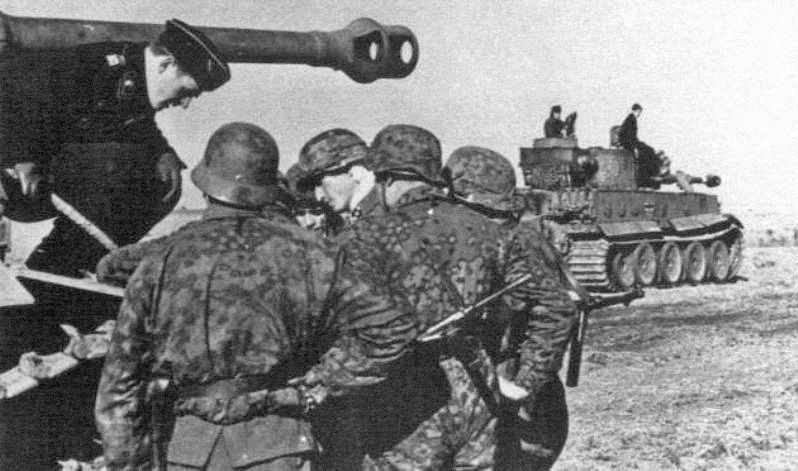
National Archives
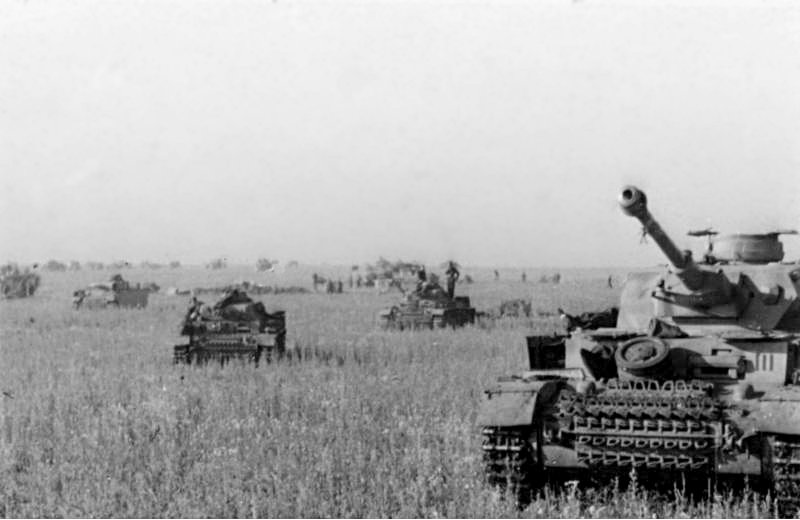
Bundesarchiv
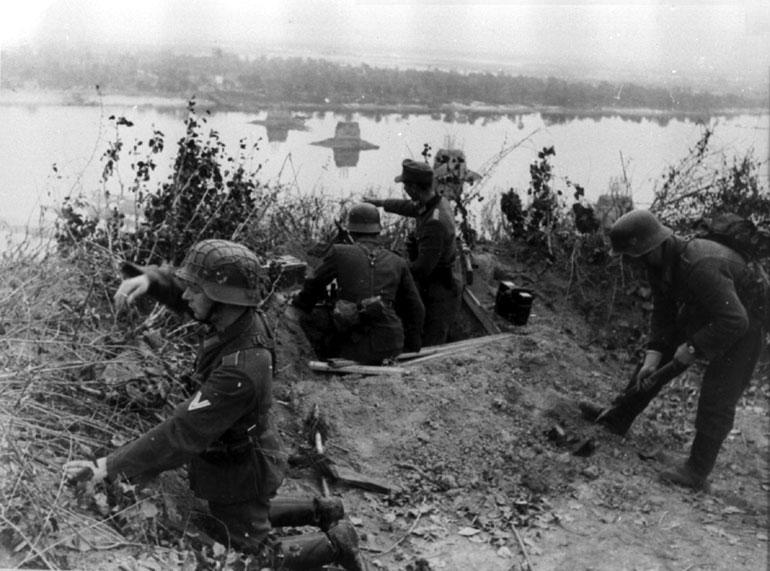
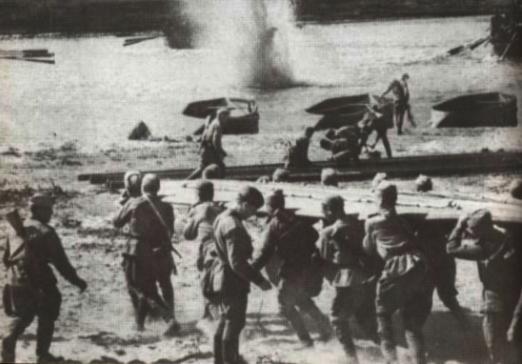
Russian public domain
Wikipedia - "Battle of the Dnieper"
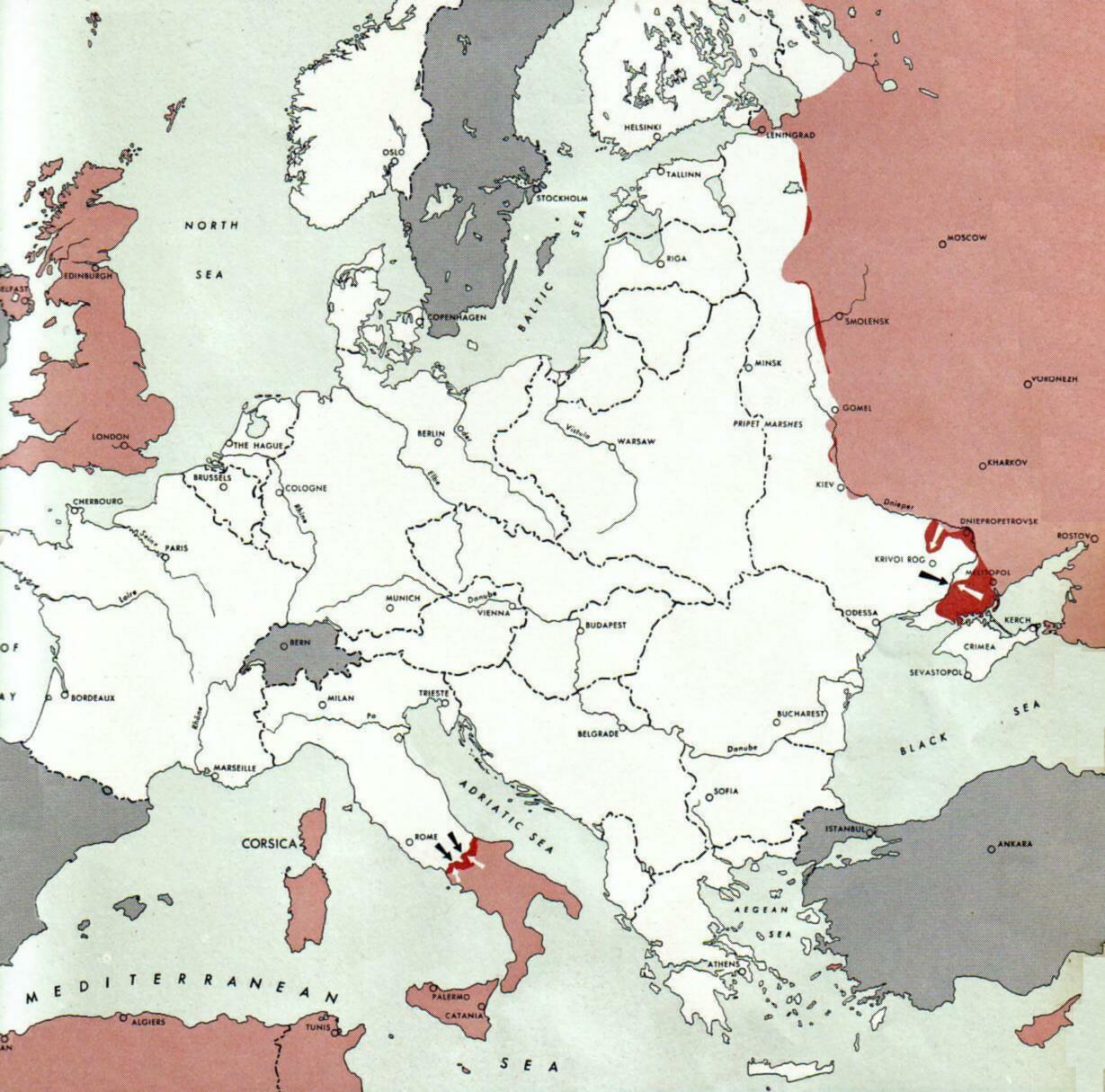
THE
SEIGE OF LENINGRAD (ST. PETERSBURG) SEPTEMBER 8, 1941 - JANUARY 27, 1944 |
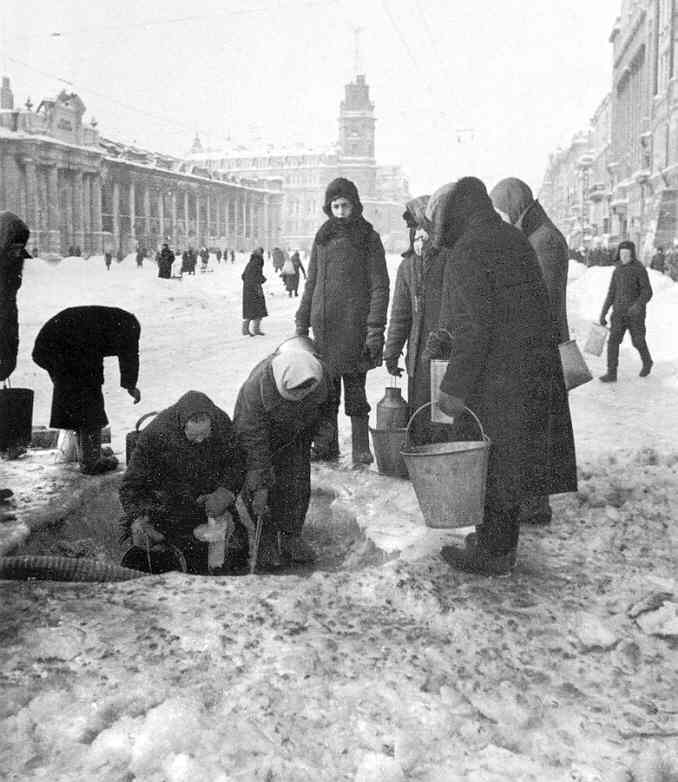
Sovfoto/Eastfoto
Sovfoto/Eastfoto
RIA Novosti archive
Sovfoto/Eastfoto
THE SOVIET PARTISANS WORKING BEHIND GERMAN LINES |
It is dangerous work
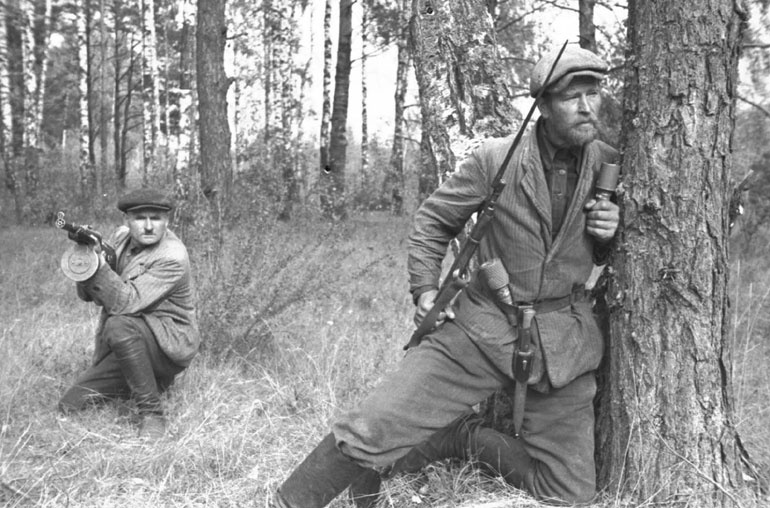

Novosti Press Agency


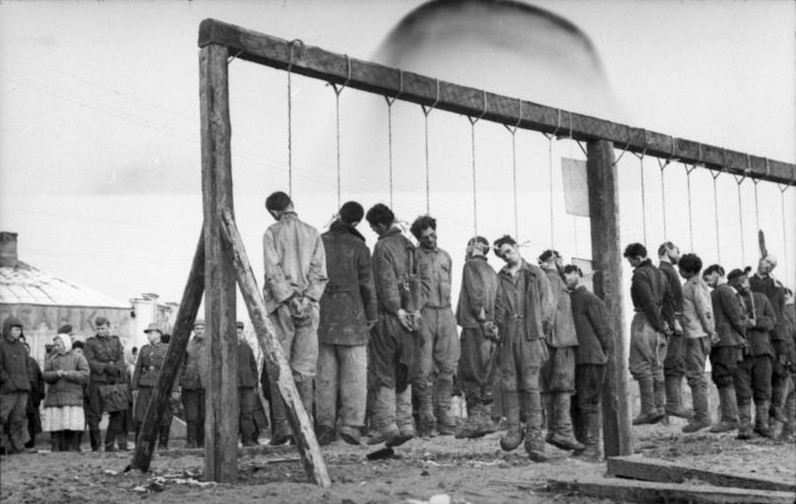
Deutsches Bundesarchiv
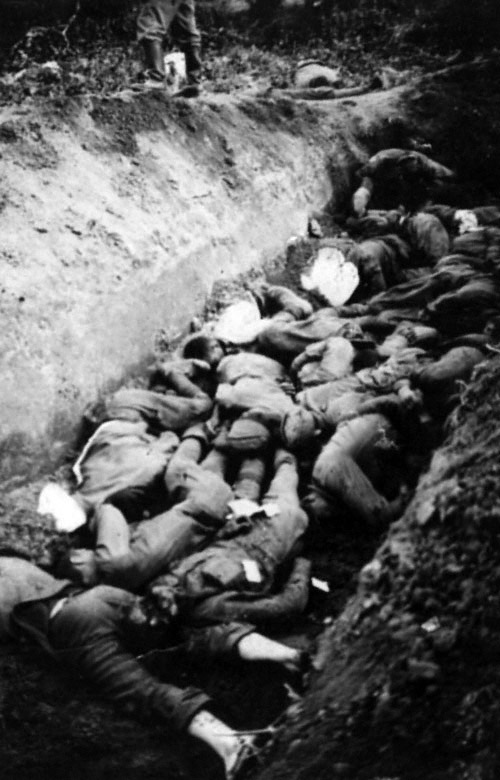
Russian public domain
THE
TEHRAN CONFERENCE (NOVEMBER 28 - DECEMBER 1,1943) |
Stalin, Roosevelt and Churchill at the Tehran Conference - November 28th to December 1st 1943. Roosevelt and Churchill promised Stalin that they would open a Western front in France by May of the following year ... to help take German pressure off Russia. They agreed also about the status of Iran and Turkey ... and how and when Russia would join the war against Japan
THE
SOVIET ADVANCE ON THE EASTERN FRONT: 1944 |
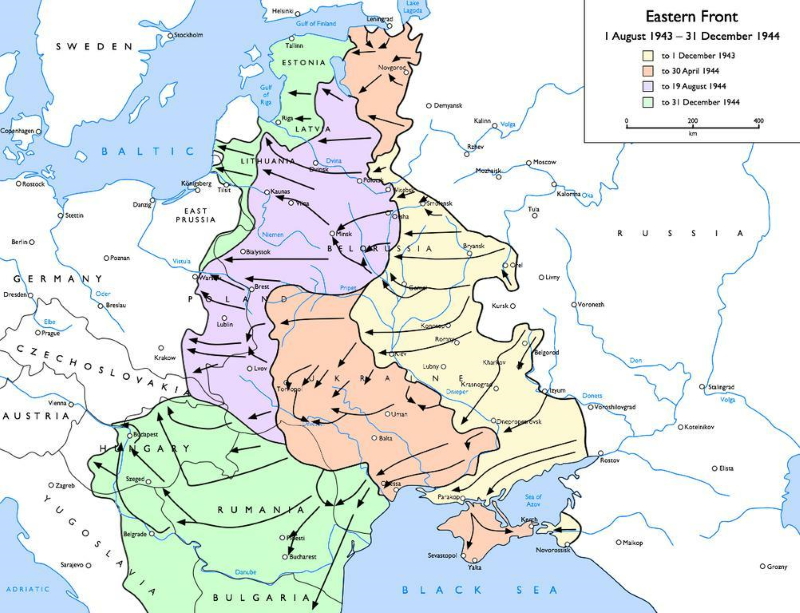
Wikipedia - "Eastern Front (World War II)"
|
The Soviet summer offensive of 1944 By mid-1944 the Russians were ready for a major offensive against the Germans, one designed to drive them from the borders of the Soviet Union and the eastern part of Poland that the Russians had once held under the Molotov-Ribbentrop Treaty with Germany. The Russians had been making constant progress against the Germans in the eastern and central Ukraine … and the Russian troops were in high spirits. In mid-July the offensive began on three separate fronts and quickly achieved its objectives. Indeed, by the end of August the Germans had lost approximately everything they had gained since June of 1941 when they had undertaken the surprise invasion (Operation Barbarossa) of Soviet-held territory in Poland and even the Soviet Union itself. By the end of August the Russians had rolled all the way up to the Vistula River in central Poland. The Germans were in retreat everywhere in the East.
|
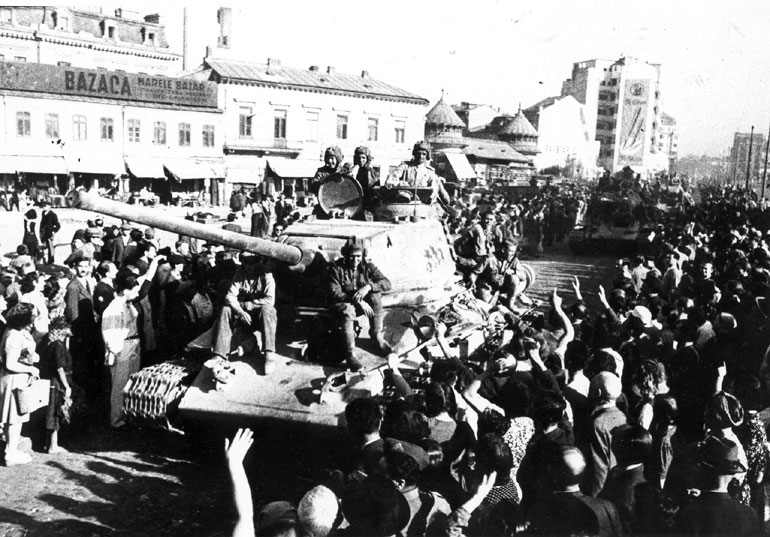
|
However ... Stalin
did not send his troops through Poland to
liberate it ... but to enslave it!
The Warsaw Uprising (August-September 1944). As the Russians
approached the Polish
capital, Warsaw, the Polish government- in-exile in London gave the orders
for the Polish Home Army to rise up against their German occupiers and
liberate the city (beginning August 1st). The goal was to demonstrate
that the Poles were themselves an independent fighting force and allies
in the action against Germany.
But Stalin had other
plans.
He had set up his own Polish government-in-exile composed of Polish Communists
loyal to him personally, and he had no intention of letting the London
Poles take charge of Poland upon its liberation. Thus the Russian
offensive against the Germans halted … long enough to let the Germans take
their own vengeance against the Poles involved in the Warsaw
uprising.
Mass destruction. And
the Germans
were brutal.
Some 150,000 to 200,000 were killed by the Germans in breaking the move
to freedom by the Poles. Warsaw itself was nearly completely destroyed
... by careful design of the Germans themselves ... who torched the
buildings that bombs had not destroyed. With
the surrender of the Polish resistance (October 2, 1944), the surviving
civilian population was removed from the city and sent to a transit
camp for scrutiny ... with nearly 100,000 sent to labor camps and some
60,000 sent to concentration (or "death") camps. Meanwhile
Russian action in the region had halted completely ... and was resumed
under Stalin's orders only when the Polish resistance movement was
broken by the Germans ... and Warsaw destroyed. Then and only then was
Stalin willing to have the Russians resume their
offensive against the Germans … "liberating" (taking control of) a
broken
city which the Russians intended to govern. After
the war Stalin had returning Polish prisoners arrested (sent off to
Soviet concentration camps in Siberia or even executed directly) on
various charges (including even "Fascism"!) ... fearing such former
Polish activists as potential rebels against his own rule in Poland
(through compliant Polish Communists).
|
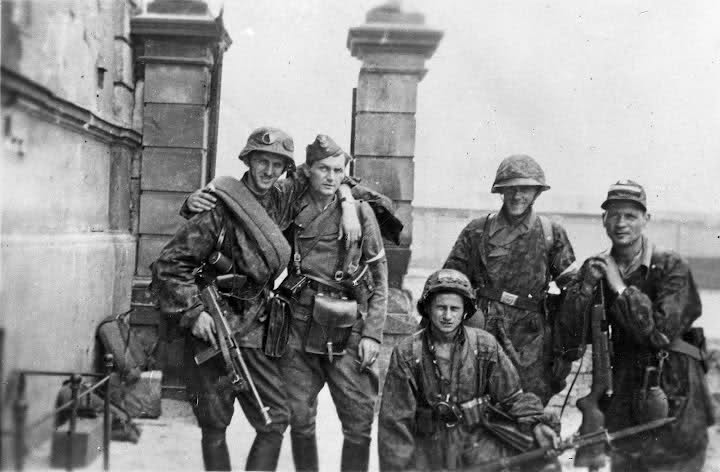
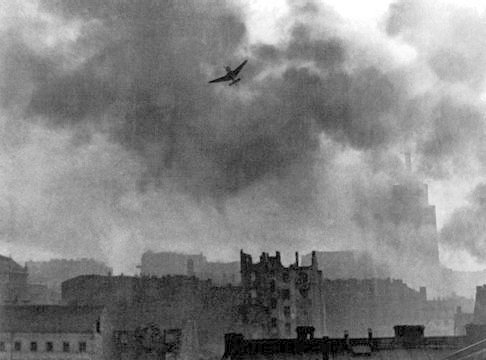
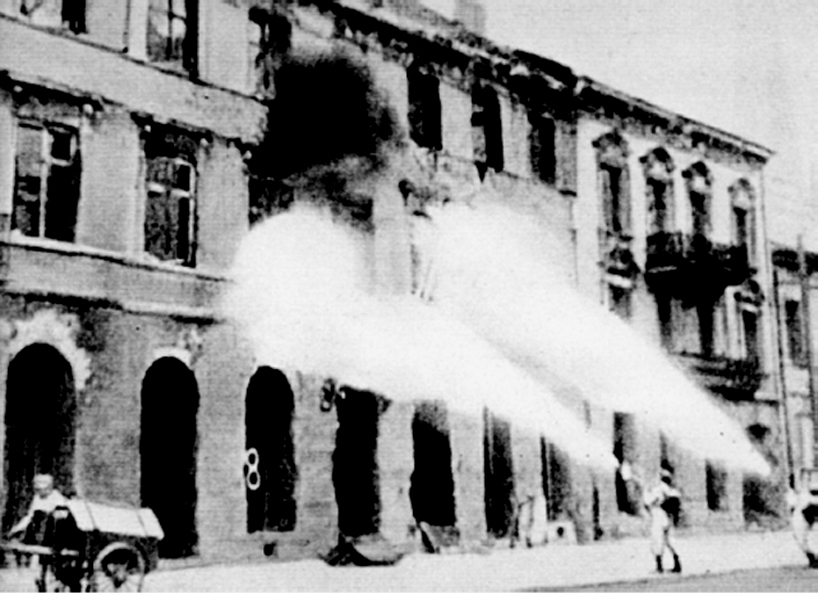
|
Stalin's goals in the Balkans were the same as those for Poland
... except that he miscalculated a bit when it came to Yugoslavia Romania. In late August in eastern Romania, the Russians succeeded in defeating a worn-out Nazi ally, the remnants of a Romanian army, with the considerable help of a Romanian uprising designed to overthrow the pro-Nazi government and institute a return of the Romanian king. But the real victors were the Romanian Communists who under Stalin and the Red Army’s sponsorship took charge of Romania step by step (the king was forced to abdicate three years later). Bulgaria.
When the Russian Red Army entered Bulgaria in early September, a huge
uprising occurred as various groups attempted to take charge of the
chaos resulting from the collapse of the pro-Nazi Bulgarian
government. Bulgaria quickly was moved under the control of a
pro-Soviet administration. And the Bulgarian Army likewise
switched sides to join the Russians in the further move West into
Yugoslavia. As
the Germans by the summer of 1944 found themselves in retreat, Tito's
Partisans moved quickly to take control of the southern part of the
country ... at the same time as the Russians and their new Bulgarian
allies drove the Germans from the northern regions of the
country. In the latter part of October the two forces (Russian
and Tito’s Partisans) met in the capital Belgrade as the German
presence in Yugoslavia collapsed. Then with fellow-Communist Tito in position to continue the struggle against the Germans in Yugoslavia, Stalin's Red Army turned its focus northward, toward Budapest in Hungary. |
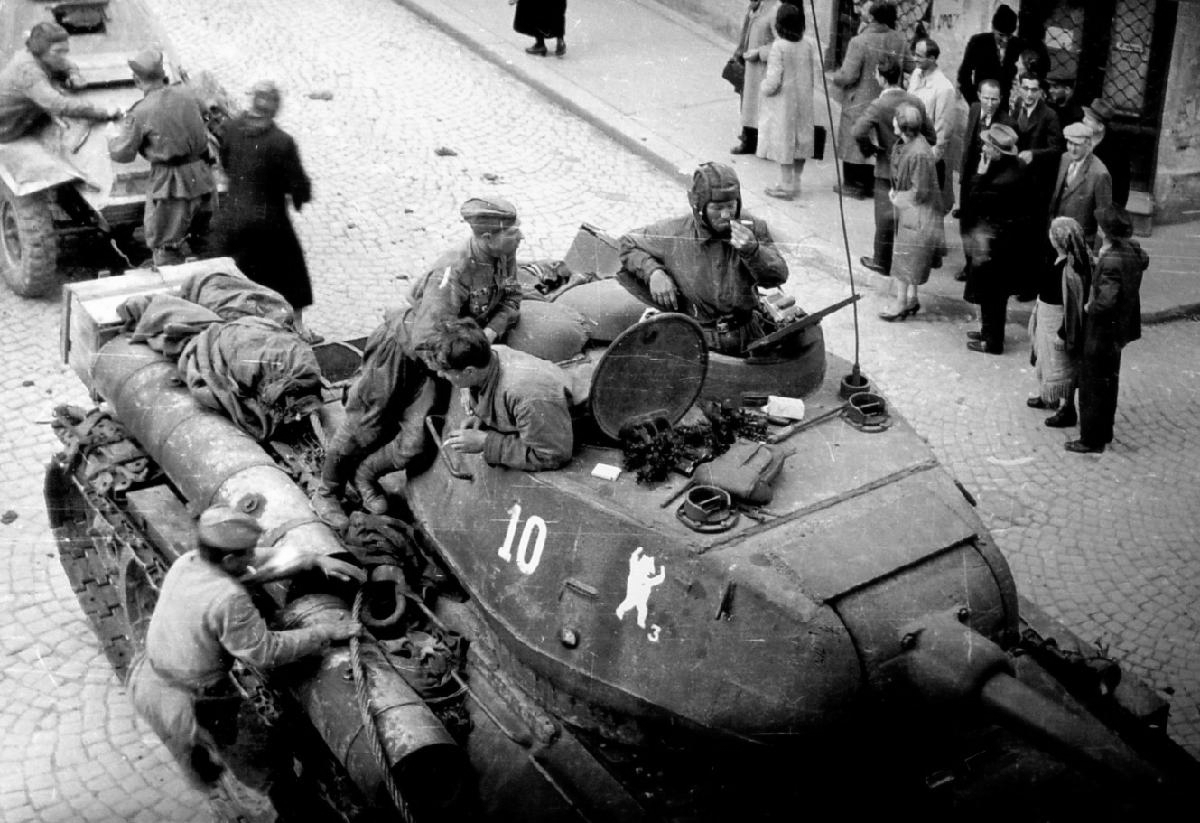
A Soviet T-34 tank on the street of
Belgrade, Yugoslavia
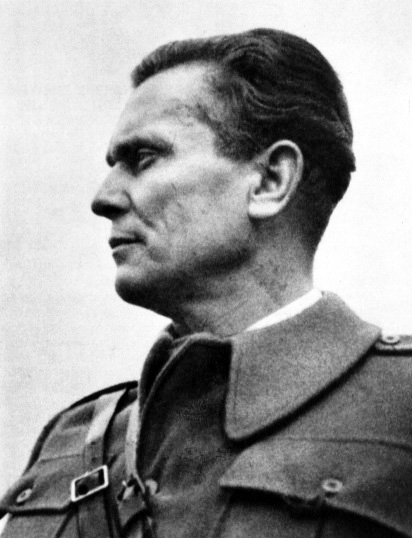 Josip Broz Tito - leader of the Yugoslav Communist Partisans
Josip Broz Tito - leader of the Yugoslav Communist Partisans
|
Against Hungary Soon after this the Red Army moved on toward Hungary … where the Hungarians and their German allies proved much more resistant to the Russian offensive. It was not until February of the following year (1945) that the Hungarian capital Budapest was taken by the Red Army and their new allies, the Romanians. |

Go on to the next section: The Western Front

Go on to the next section: The Western Front


